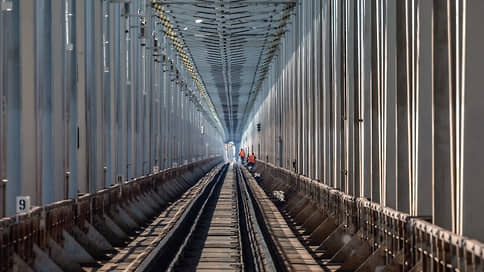The Eurasian Development Bank has found a tool for the joint creation of the infrastructure of the union
[ad_1]

For the construction of infrastructure within the framework of transport routes in the countries of the EAEU, Central Asia and the South Caucasus, countries can develop a mechanism for cross-border public-private partnership (PPP), experts from the Eurasian Development Bank (EDB) believe. So far, such a mechanism has been activated only once in the region – during the construction of the bridge across the Amur by the Russian Federation and China. A limitation for such projects is the need to conclude intergovernmental agreements or unify the laws on PPP of the participating countries, but the geopolitically motivated restructuring of trade routes around the Russian Federation can make them in demand.
The Eurasian Development Bank proposes to develop infrastructure in the countries of the EAEU, Central Asia and the South Caucasus through cross-border public-private partnership projects. Usually, PPPs are implemented at the national level, but projects involving multiple parties and a private investor can solve the problem of lack of funds for the development of cross-border infrastructure, according to the report of the bank “Cross-border public-private partnerships”. It will be presented at the Eurasian Congress.
Such projects are limited by an increase in risks for investors due to the scale of projects, currency settlements, the number of parties and the complexity and potential instability of legal regulation. In the EAEU, cross-border PPP was used once – during the construction of a road bridge across the Amur. The Russian grantor was the government of the Amur Region, the Chinese one was the government of Heilongjiang Province, the concessionaire was the Russian-Chinese joint company with limited liability for the development and construction of the Amur (Heilongjiang) bridge. The agreement was signed back in 1995, and in 2015 an additional protocol was added to it.
Nevertheless, the mechanism can be used to finance projects related to international transport corridors, as well as for the joint use of hydroelectric power plants, laying pipelines and telecommunications networks, the EDB believes. The bank sees promising projects for the construction and subsequent operation of the China-Kyrgyzstan-Uzbekistan railway, the Kambarata HPP-1, the Almaty-Issyk-Kul alternative highway, the Russia-South of Kazakhstan power line, as well as the border railway crossing on the Kazakh-Chinese border.
The launch of such projects, however, requires the creation of a special legal regime and the signing of intergovernmental agreements. The national PPP laws of the EAEU countries regulate domestic PPP projects, without providing for the possibility of joint implementation of projects by several states, the authors of the report point out, recommending “subordinate them to an international treaty or establish in their national PPP laws a single legal regime for cross-border PPPs.” Harmonization of laws will also be required for the operation of cross-border infrastructure. The private partner thus acts as a coordinator of obligations on both sides of the border. It is assumed that these may be development banks (they may also be responsible for preparing a feasibility study for the project).
As Managing Director of the National PPP Center Artem Volodkin explains, there really is no unified legal mechanism for the implementation of cross-border projects in the EAEU. The main advantages of cross-border projects, according to him, are the development of economic connectivity of countries, logistics routes and foreign economic activity. For example, for the Russian Federation with its common border with many Asian countries, such projects may be of interest both at the level of cross-border cooperation and intercountry cooperation. Artem Volodkin also refers to the risks of such projects as the lack of a unified strategic planning for infrastructure development in neighboring countries. In his opinion, international development banks can become integrators and a “single window” for the selection and implementation of projects.
[ad_2]
Source link






